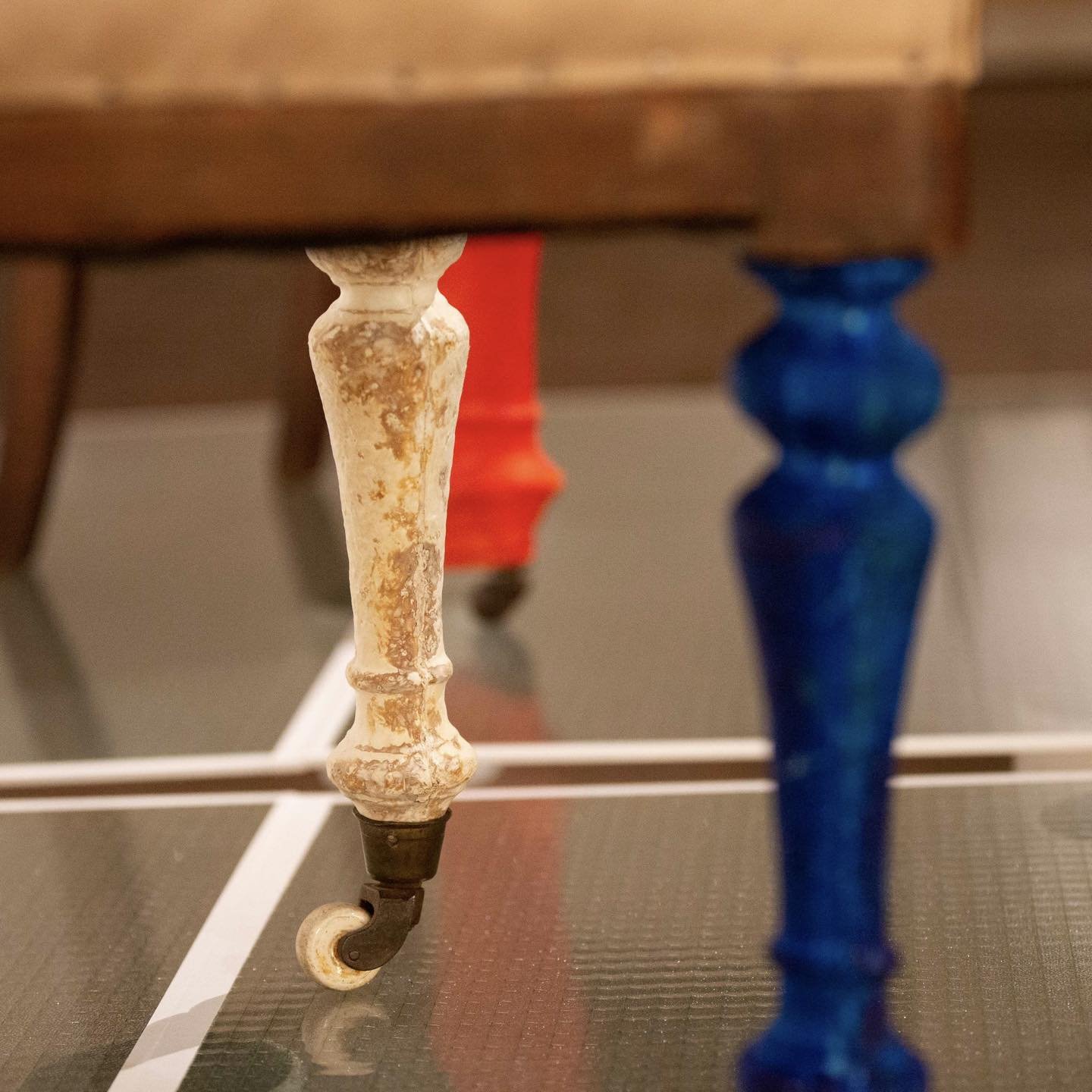[Bio] Restitution
Developed for IMPERMANENT exhibition for Melbourne Design Week 2023 and part of the ongoing experimental series of works for MYCOLAB at Mycelium Studios.
The experimentation pushed further into investigating the materiality of mycelium, growing chair legs, exploring mycelium leather, using vac forming to explore the form constraints and finishing; and a first in colouring mycelium.
[Bio] Restitution team:
Josh Reisel - mycelium fabrication
Paige Miller - upholstery and chair fabrication
Jim Clark - upholstery and chair fabrication
Ed Linacre - mycelium experimentation
Philippa Abbott - mycelium experimentation
Conceptual statement
[Bio] Restitution is a conceptual and material exploration that not only imagines, explores and demonstrates bio futures and the material possibilities of mycelium, however reflects on this in the context of present and past eras of manufacturing. The works take a moment to ponder the significance of design and materiality within industrial manufacturing here and now, in this particular time and place. The transition through different eras and relevant discourses, the end of the industrial era, resource depletion, value of waste and constructs such as commercial extinction ("Australian Red Cedar is now commercially extinct").
[Bio]Restitution is contemporary disruption of classic form, through replacement and reformation - the possibility of mycelium as a material through colour, shape, method and final configuration. The two chairs contemplate this through hybrid design, method and process - upcycling of an iconic (however common) piece of furniture; form replication of the chair leg and upholstery, reconstitution using mycelium; redefining of the chair leg through form extrusion and colour; reclaiming the material through injection of mycelium into the wooden frame; patchworking of mycelium leather with contemporary materials and a bold aesthetic.
The mycelium takes over the chair, claiming it back through this new materiality - a poignant disruption in product design and development. What does this new shift to biomaterials mean for the next post-industrial chapter?
Showcased at IMPERMANENT: Melbourne Design Week 2023



